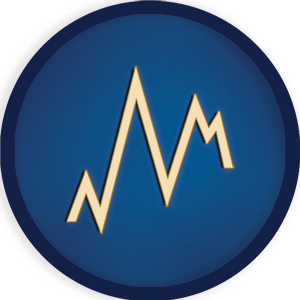4. MACFAC¶
4.1. Importing Packages¶
from mlots.models import kNNClassifier
from sklearn.model_selection import GridSearchCV
from scipy.io import arff
import matplotlib.pyplot as plt
import pandas as pd
import numpy as np
import warnings
from sklearn.metrics import accuracy_score
warnings.filterwarnings("ignore")
import matplotlib
import time
%matplotlib inline
font = {'size' : 22}
matplotlib.rc('font', **font)
4.2. Loading Data¶
Here we are loading the
PickupGestureWiimoteZ dataset.The datasets are in two
.arff files with pre-defined train and
test splits.The following code reads the two files stores the
X (time-series
data) and y (labels), into their specific train and test sets.
***name = "PickupGestureWiimoteZ"
dataset = arff.loadarff(f'../input/{name}/{name}_TRAIN.arff'.format(name=name))[0]
X_train = np.array(dataset.tolist(), dtype=np.float32)
y_train = X_train[: , -1]
X_train = X_train[:, :-1]
dataset = arff.loadarff(f'../input/{name}/{name}_TEST.arff'.format(name=name))[0]
X_test = np.array(dataset.tolist(), dtype=np.float32)
y_test = X_test[: , -1]
X_test = X_test[:, :-1]
#Converting target from bytes to integer
y_train = [int.from_bytes(el, "little") for el in y_train]
y_test = [int.from_bytes(el, "little") for el in y_test]
#Filling NaN/missing values with 0.0
X_train = np.nan_to_num(X_train, 0.0)
X_test = np.nan_to_num(X_test, 0.0)
X_train.shape, X_test.shape
((50, 361), (50, 361))
Set |
Sample size |
TS length |
|---|---|---|
Train |
50 |
361 |
Test |
50 |
361 |
4.3. Evaluating kNNClassifier for full-k-NN-DTW¶
4.3.1. Model tuning¶
kNNClassifier model allows us to work with a more complex distance
measure like DTW in with or without MAC/FAC strategy.Here, we would use
GridSearchCV algorithm from the sklearn
package to find the best set of parameters of the model over the
dataset.The model tuning would be done only over the
train set of the
dataset. ***#Setting up the warping window grid of the DTW measure
dtw_params = []
for w_win in range(5,10,3):
dtw_params.append(
{
"global_constraint": "sakoe_chiba",
"sakoe_chiba_radius": w_win
}
)
dtw_params
[{'global_constraint': 'sakoe_chiba', 'sakoe_chiba_radius': 5},
{'global_constraint': 'sakoe_chiba', 'sakoe_chiba_radius': 8}]
#Setting up the param grid for the kNNClassifier model with the DTW params
param_grid = {
"n_neighbors": np.arange(1,10,2),
"metric_params" : dtw_params
}
param_grid
{'n_neighbors': array([ 1, 3, 5, 7, 9]),
'metric_params': [{'global_constraint': 'sakoe_chiba',
'sakoe_chiba_radius': 5},
{'global_constraint': 'sakoe_chiba', 'sakoe_chiba_radius': 8},
{'global_constraint': 'sakoe_chiba', 'sakoe_chiba_radius': 11}]}
#Executing the GridSearchCv over the kNNClassifier model with the supplied param_grid.
model = kNNClassifier(mac_metric="dtw")
gscv = GridSearchCV(model, param_grid=param_grid, cv=5,
scoring="accuracy", n_jobs=-1).fit(X_train,y_train)
#Displaying the best parameters of kNNClassifier within the search grid.
best_param = gscv.best_params_
best_score = gscv.best_score_
print("Best Parameters: ", best_param)
print("Best Accuracy: ", best_score)
Best Parameters: {'metric_params': {'global_constraint': 'sakoe_chiba', 'sakoe_chiba_radius': 5}, 'n_neighbors': 1}
Best Accuracy: 0.62
4.3.2. Evaluation of tuned model¶
The parameters displayed above are optimal set of parameters for the
kNNClassifier model over PickupGestureWiimoteZ dataset.Our next task is then to train the
kNNClassifier model over the
train set with the optimal set of parameters, and evaluate the
model over the held-out test set. ***start = time.time()
model = kNNClassifier(**best_param,mac_metric="dtw",
n_jobs=1).fit(X_train,y_train)
y_hat = model.predict(X_test)
acc = accuracy_score(y_test, y_hat)
end = time.time()
elapsed = end-start
print("Model Accuracy: ", round(acc, 2))
print("Time: ", round(elapsed, 2))
Model Accuracy: 0.7
Time: 12.75
We achieve an accuracy of 70% by full k-NN-DTW model. The model takes 12.75 \(s\) to complete the task.
4.4. Using MAC/FAC Strategy¶
Here we would look into speeding up the classification of the
kNNClassifer model by using the MAC/FAC strategy.
The classification would happen in two stages: - MAC stage: The model
retrieves a candidate subset of size
mac_neighbors using the
mac_metric. - FAC stage: The model retrieves the closest
n_neighbors from the candidates set using DTW, and consider
them for prediction/classification.4.4.1. Model tuning¶
param_grid = {
"n_neighbors": np.arange(1,6,2),
"mac_neighbors": np.arange(20,40,5)
}
param_grid
{'n_neighbors': array([ 1, 3, 5]),
'mac_neighbors': array[20, 25, 30, 35]}
#We use the the same metric_params as supplied to previous model, for fair analysis.
metric_params = {'global_constraint': 'sakoe_chiba', 'sakoe_chiba_radius': 5}
model = kNNClassifier(mac_metric="euclidean",
metric_params=metric_params)
gscv_mf = GridSearchCV(model, param_grid=param_grid, cv=5,
scoring="accuracy", n_jobs=-1).fit(X_train,y_train)
#Displaying the best parameters of kNNClassifier within the search grid.
best_param_mf = gscv_mf.best_params_
best_score_mf = gscv_mf.best_score_
print("Best Parameters: ", best_param_mf)
print("Best Accuracy: ", best_score_mf)
Best Parameters: {'mac_neighbors': 20, 'n_neighbors': 1}
Best Accuracy: 0.7
4.4.2. Evaluation of tuned model¶
start = time.time()
model_mf = kNNClassifier(**best_param_mf,mac_metric="euclidean",
metric_params=metric_params, n_jobs=1).fit(X_train,y_train)
y_hat_mf = model_mf.predict(X_test)
acc_mf = accuracy_score(y_test, y_hat_mf)
end = time.time()
elapsed_mf = end-start
print("Model Accuracy: ", round(acc_mf, 2))
print("Retrieval Time: ", round(elapsed_mf, 2))
Model Accuracy: 0.7
Retrieval Time: 0.93
kNNClassifer w/ MAC/FAC strategy achieves the same classification accuracy of full-kNN-DTW. However, the model is 10 times faster than the previous one.
4.5. Comparison¶
Here we do bar-plot that would illustrate the performance of the
kNNClassifier model with default parameters against the model
with the tuned parameters.The
matplotlib.pyplot is employed for this task. ***models = ["Vanilla", "MAC/FAC"]
fig = plt.figure(figsize=(12,8))
ax = fig.add_subplot(111)
ax.bar(models, [acc,acc_mf], color="skyblue", label="Accuracy")
ax2 = ax.twinx()
ax2.plot(ax.get_xticks(),
[elapsed,elapsed_mf],
color='r',
markersize=12,
marker="x",
mew=2,
linewidth=0, label="Time")
fig.legend(loc=(0.65,0.75))
ax.set_ylabel('Accuracy (%)')
ax2.set_ylabel('Time (s)')
plt.show()

